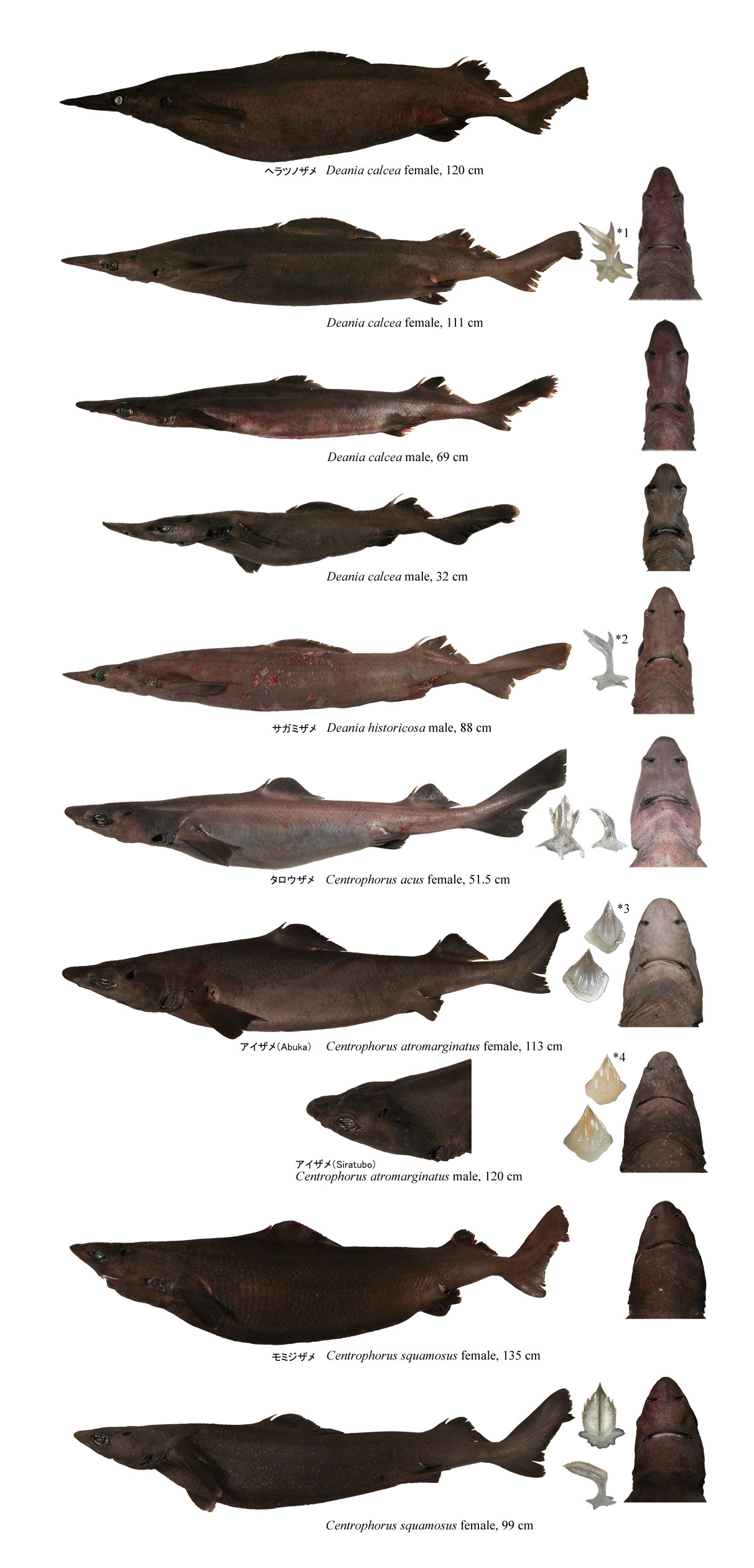
Plate 1. Plate 2. Plate 3. Plate 4.
|
*1 & *2: Deania calcea (Lowe, 1839) and Deania
historicosa Garman, 1906: Compagno distinguished them by body color (D.
calcea; grey-brown, D. historicosa; blackish brown) and crown length of dermal denticle (D. calcea; 0.5 mm, D. historicosa; 1mm). It seems to me that these two markings are not definite evidence
for separating them. Both characteristics vary according to age. Denticle
and tooth size are proportional to trunk size. Most of species belonging
to the genus Deania possess denticle with quadricuspidate except D. historicosa which bears denticle with tricuspidate. In this site, I assigned fish
with tricuspidate as D.
historicosa. On the other hand, fish with quadricuspidate as D. calcea.
Deania quadrispinosum (McCulloch, 1915) bears pitchfork-shaped denticles but its teeth are quite
different from those of D. calcea. |
20100520 Fumio Nakagawa